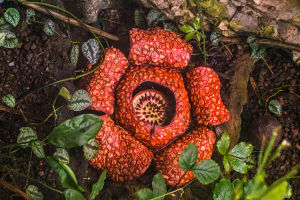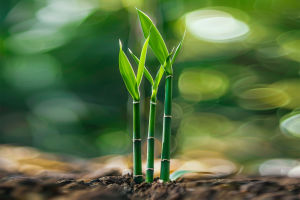Plants are often viewed as passive organisms, rooted in place, with little interaction with their environment. However, this couldn't be further from the truth.
Plants are highly responsive to environmental changes, from shifts in light to the presence of nearby predators.
In fact, plants can "sense" their surroundings through an intricate set of mechanisms and adjust their growth, behavior, and even chemical production to ensure their survival. In this article, we'll delve into the fascinating world of plant responses to environmental changes.
Understanding Plant Sensory Systems
Plants lack a nervous system like animals, but they have evolved highly sophisticated mechanisms to perceive and respond to changes in their environment. The process of environmental sensing in plants is called photoreception (light sensing), gravitropism (gravity sensing), thermoreception (temperature sensing), and more. While these may sound complex, they are essential for ensuring plants survive and thrive in a constantly changing world.
For instance, plants possess light-sensitive proteins, such as phytochromes, which detect the amount and quality of light around them. Phytochromes allow plants to determine whether they are receiving adequate sunlight or if they need to alter their growth pattern, like leaning toward a light source. This process is known as phototropism, where plants bend toward light, optimizing their ability to carry out photosynthesis.
How Plants Respond to Temperature Shifts
Temperature is another key factor that influences plant survival. Plants can detect shifts in ambient temperature and adjust their biological processes accordingly. In fact, plants often "sense" changes in temperature as a trigger for critical life events such as flowering, germination, or leaf drop.
Thermoreceptors in plants detect changes in temperature and trigger biochemical responses. For example, when temperatures drop, certain plants like deciduous trees begin the process of leaf shedding to conserve water and energy. On the other hand, some species, such as cacti, have developed unique adaptations to withstand extreme heat. Their thick, waxy skin reduces moisture loss, while their roots are deep enough to access water during dry spells.
Plants Can "Hear" Their Environment
Did you know that plants may even have a form of auditory sensitivity? Recent studies have shown that plants can respond to sound vibrations. For example, cabbage plants can grow more quickly when they are exposed to the sound of bees. The theory behind this is that the vibrations produced by pollinators or environmental sounds might signal to the plants that they should prepare for pollination, leading to faster growth and more efficient reproduction.
Plants also respond to mechanical sounds, such as wind. The response of plant tissues to the physical pressure of wind is known as thigmomorphogenesis. For instance, plants like willows and oaks have thicker stems and stronger roots when exposed to continuous wind, a result of the plant's adaptation to prevent damage from frequent gusts.
Chemical Communication in Plants
One of the most fascinating ways plants sense their environment is through chemical signals. Plants can release certain chemicals, known as volatile organic compounds (VOCs), as a way to communicate with each other or defend against threats. For example, when a plant experiences herbivory (eating by animals), it may release VOCs that act as a distress signal to neighboring plants. In response, these plants can produce defensive chemicals like bitter-tasting compounds or even attract natural predators of the herbivores to protect themselves.
Additionally, plants can "smell" the presence of other plants. Allelopathy is a phenomenon where one plant releases chemicals into the soil that inhibit the growth of nearby plants. This can be a survival tactic to reduce competition for resources, particularly when space or nutrients are limited.
Plants Can "See" Their Surroundings
Just as humans use their sense of sight to assess their environment, plants also rely on photoreceptors to "see" and interpret light. Beyond just finding light for photosynthesis, plants can also use light signals to gauge their surrounding environment. For example, some plants use shade avoidance strategies when they detect competition for light.
Certain plants, like the sunflower, can follow the path of the sun throughout the day using a phenomenon called heliotropism. They can adjust the position of their leaves or flowers to maximize sunlight absorption, which ultimately improves their energy production and growth.
The Role of Roots in Sensing the Environment
While above-ground adaptations are essential, plants also rely on their roots to sense underground conditions. Roots have evolved gravitropic abilities, allowing them to detect the direction of gravity and grow downward into the soil to access water and nutrients. Roots also respond to the chemical composition of the soil and can navigate toward areas rich in nutrients.
In response to nutrient deficiencies, plants may alter their root architecture. For example, if a plant detects a deficiency in nitrogen, it might increase the growth of lateral roots to search for nitrogen-rich areas. Additionally, some plants have developed mycorrhizal networks in their roots, which allow them to share nutrients and information with nearby plants, improving their collective survival in challenging environments.
Conclusion: Plants Are More "Alive" Than We Think
The way plants sense and respond to environmental changes is far more complex than most people realize. From detecting light to listening to sound vibrations, from chemical signaling to adjusting root growth, plants are constantly reacting to their surroundings to ensure their survival. These adaptations not only make them resilient in changing climates but also showcase the remarkable intelligence that nature has programmed into them. The next time you walk through a garden, remember: those beautiful flowers, shrubs, and trees are constantly working behind the scenes to thrive in an ever-changing world.
By understanding how plants sense their environment, we gain insight into their survival strategies and how we can better care for and grow them in our gardens and homes. Whether it's adjusting to temperature fluctuations, responding to vibrations, or communicating with one another, plants show us that their world is a lot more dynamic and interactive than we might have thought.


